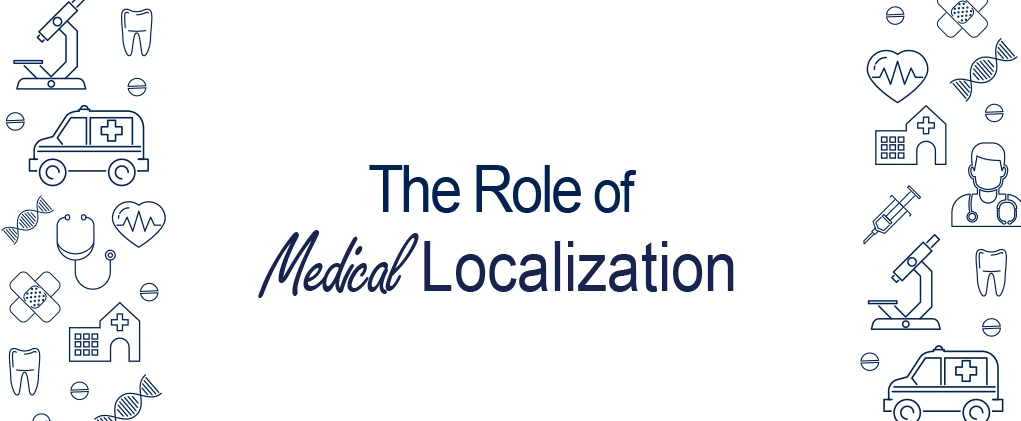The Role of Medical Localization in Enhancing Patient Safety and Satisfaction
Key Takeaways:
- Medical localization ensures that proper healthcare is given to different communities for safety and satisfaction.
- Patients appreciate the efforts of healthcare providers to distribute content that resonates with them.
- Patient satisfaction comes from quality services, effective communication, and established trust with the healthcare provider.
- Medical localization is crucial in saving lives and avoiding circumstances that endanger patients and healthcare providers alike.
Table of Contents:
- Why We Need Medical Localization
- Enhancing Patient Safety and Satisfaction
- Challenges in Medical Localization
- Best Practices for Enhanced Patient Safety and Satisfaction Through Localization
Medical localization is crucial to extend healthcare services to more communities. When implemented correctly, patient safety and satisfaction is ensured and everyone is healthy and happy. Learn more about medical localization in this article.
Why We Need Medical Localization
Medical localization is crucial in delivering quality healthcare, and most importantly, one that is safe. With lives at stake, content must be as clear and correct as possible.
Medical localization seeks to provide accessible, error-free, and culturally tailored prescriptions, medical reports, manuals, modules, etc. It ensures that people from different cultures acquire the right dosage for medicines and the services appropriate for their conditions. Even the slightest lapse or mistranslation can be fatal. With that, the task is strictly handled by professionals, like CCCI, to ensure accurate medical translation.
The differences between translation and localization are few but significant. In a nutshell, a word-for-word conversion of language is the minimum requirement for translation. Localization, however, takes into account things like context and culture. It takes into consideration how tuberculosis, asthma, pneumonia, and other related conditions are also understood as “mahina ang baga” (literally, “weak lungs”) in Filipino. The Filipino term “pasma” can also prove useful in communicating anything about abrupt exposure to hot and cold conditions. Utilization of these familiar terms as a starting point for a deeper discussion with a Filipino patient can make a difference.
Patients are more receptive to familiar content, linguistically and culturally speaking. If healthcare providers intend to hand out leaflets and similar materials, both the language and design should be appropriate to the culture. Information and content that do not resonate with the target audience have little to no appeal to most audiences. Furthermore, patients appreciate the efforts of healthcare providers who try to relate to them. For their informational videos, healthcare providers can even invest in medical subtitling services.
Medical localization also concerns materials healthcare providers use. Graphical User Interfaces and other software have to be properly translated and tailored to the users. This goes the same for instructional materials. The lives of patients are in the hands of the people who will use these materials and equipment. These materials and equipment must be correct and understandable as improper usage can be life-threatening.
Enhancing Patient Safety and Satisfaction
It cannot be stressed enough that localization for the medical industry can go so far as to save lives. This, after all, is every healthcare provider’s top priority: the safety and well-being of their patients.
Patient Safety
It is important that the medical localization services provider is composed of professionals trained and updated in advancements in medicine. This is because they will be handling medical terminologies and procedures. Knowledge of the medicine-related regulations and legal frameworks in the target community is also important. On top of that, they must know the culture of the people receiving the content concerned.
Quality localization saves healthcare providers money and effort coming from lawsuits due to medical errors. There have been several cases around the world where absent or poor localization has cost many their comfort, even their lives.
Less than five patients in France died between 2004 and 2005 due to radiation overdose. This was because the equipment’s system was not localized and displayed text in English instead of French. Staff who knew English tried to help but only resulted in errors costing lives and money.
In Germany, from 2006 to 2007, A translation error misled German doctors who mistakenly used orthopedic devices on 47 patients. Instead of being labeled as “non-modular cemented,” they were labeled as “without cement” in German. The incorrect application caused the distress of the patients, who later underwent surgery. Legal action was pursued against the hospital and manufacturer.
There are some points of reflection from these two incidents. One is that medical equipment with technical content should be translated by professionals. Properly localized content undergoes quality assurance to make sure that there are no lapses. This is applicable to medicine packaging, learning modules, etc. And the costs of lapses are clear, so it is best to avoid taking risks and choose credible localization specialists and medical translation services.
Patient Satisfaction
Language is a crucial factor in effective communication. For healthcare providers, understanding instructions for equipment and medicine is crucial. And between healthcare providers and patients, language barriers can be a hindrance not only to understanding but also to building trust.
Medical localization services seek to overcome the language barrier so that healthcare providers can give effective treatment and patients can feel a sense of comfort and understanding.
A research paper in the Journal of Namibian Studies states that patient-centered and relation-focused communication has a positive impact on patient satisfaction. Content tailored to the community can help develop intimacy and trust in healthcare providers. And these are crucial for communication and engagement.
When patients feel and see the effort coming from healthcare providers, they become empowered. Trusting their healthcare providers, patients themselves return to medical institutions knowing they are valued and free from discrimination. Localized content helps encourage patients to also take care of their well-being.
Challenges in Medical Localization
There are certain challenges in medical localization, especially because the field concerns lives, emotions, and technical aspects.
- Medical technicalities: Translating may be a challenge as medical terms differ across countries. Abbreviations and acronyms, for one, may be tricky to translate if the translator is not an expert. CPR (cardiopulmonary resuscitation), for example, turns out to be RCP in France and Italy and HLW in Germany.
- Cultural differences: Different cultures have different treatments for certain conditions. One thing to also consider is that apart from language, they might have beliefs and superstitions that could clash with new medical knowledge. Cultural sensitivity should be observed at all times to avoid misinterpretation and the loss of trust.
- Legal and regulatory standards: The world is continuously advancing, and so is the field of medicine. Countries have their set regulations and standards, which are updated as necessary. Professional localization specialists know these regulations and standards. These are necessary to ensure that the content complies with the legal and regulatory requirements of the target and source countries.
Best Practices for Enhanced Patient Safety and Satisfaction Through Localization
The following are some important practices to achieve quality medical localization.
- Constant Translation and Localization Training: Localization specialists need to be constantly updated with the latest changes and innovations in medicine and its regulations. Constant training equips localization specialists with the medical and socio-cultural knowledge needed for successful content localization.
- Leverage Technology: Technological innovations have changed many aspects of life. In medical localization, technology can be used to take care of minor and general aspects. Localization specialists can then make the necessary edits to the machine-assisted content to ensure accuracy.
- Apply a Comprehensive Quality Assurance System: Localized content should undergo thorough quality assurance to ensure that there are no errors. This prevents miscommunication, accidents, and lawsuits.
- Conduct Initial Assessment: The best way to see if the content has been effectively localized is through a test run with selected community members. The result of this assessment can help localization specialists and healthcare providers make the necessary adjustments for maximum effectiveness.
Leave the job to the experts! With 10 years of localization experience in over 30 languages, you can be reassured that CCCI’s medical localization services and medical subtitling services are top-notch.
CCCI values quality, service, and the betterment of lives. And certainly, these can only happen through proper communication. Rest assured our medical translation services are handled by certified medical specialists.
Together, let us bring quality healthcare to more communities around the globe! Do you have any plans? Talk to us today!






